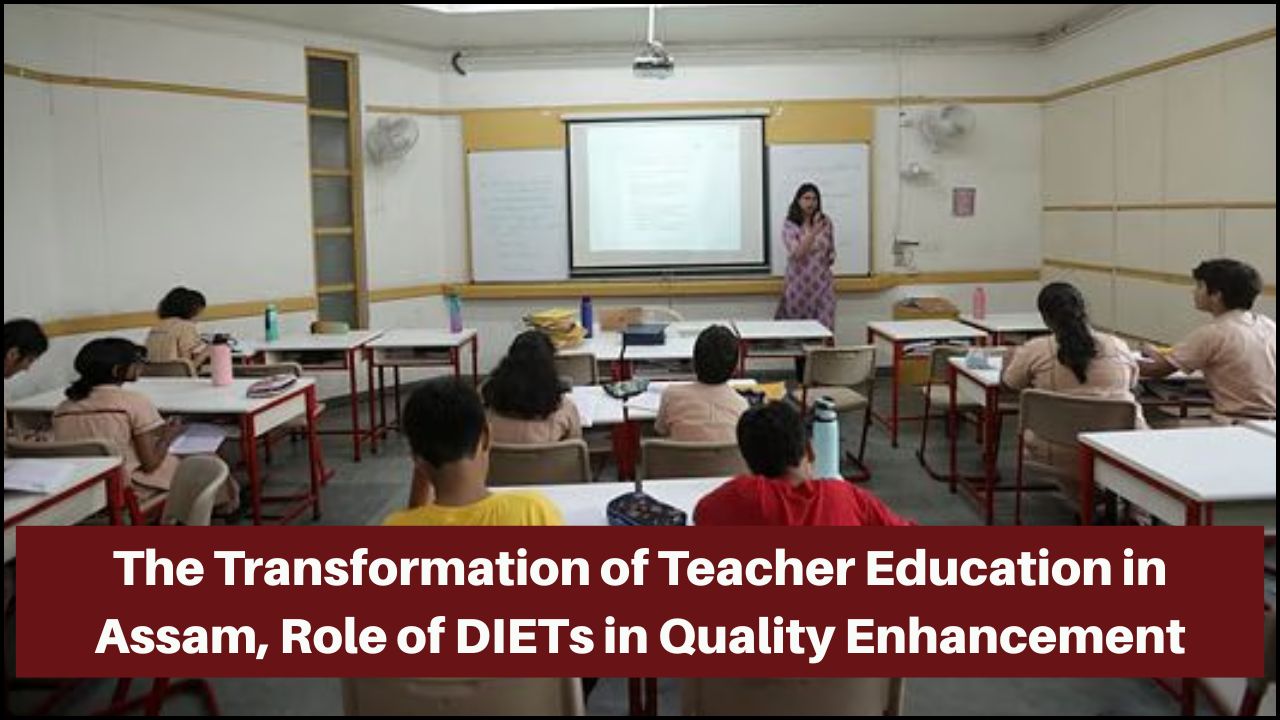
Education in rural Assam is shaped by a combination of social, economic, and cultural challenges. While the state has made progress, rural areas still struggle with infrastructure, teacher availability, and student engagement. The government has introduced several initiatives to address these barriers and improve the education system for rural students.
Table of Contents
Key Government Programmes for Rural Education in Assam
1. Right to Education Act (RTE)
- Objective: To provide free and compulsory education to children aged 6–14.
- Implementation in Assam:
- Establishment of new primary schools in underserved villages.
- Provision of free textbooks, uniforms, and mid-day meals.
- Focus on inclusive education by supporting children from marginalised communities.
2. Mid-Day Meal Scheme (MDMS)
- Objective: To enhance student attendance and nutrition.
- Benefits in Rural Assam:
- Daily meals act as an incentive for children to attend school.
- Nutritional support improves students’ physical and mental development.
- Reduction in dropout rates among primary school children.
3. Gunotsav Assam
- Objective: To evaluate and improve school performance.
- Major Features:
- Annual assessment of students, teachers, and infrastructure.
- Grades are assigned to schools based on performance.
- Focus on remedial teaching and improvement plans for underperforming schools.
4. Infrastructure Development under SSA (Sarva Shiksha Abhiyan)
- Objective: To improve basic infrastructure in government schools.
- Actions Taken:
- Construction of classrooms, toilets, and libraries.
- Installation of water filters and handwashing facilities.
- Ramp and toilet access for children with special needs.
State-Specific Schemes and Policies
| Initiative | Details |
|---|---|
| Free Bicycle Scheme for Girls | Bicycles were distributed to girls to reduce travel time and promote attendance. |
| Scholarships for ST/SC Students | Financial assistance is provided to reduce the economic burden on families. |
| Adult Literacy Programmes | Literacy initiatives for parents to encourage a home learning environment. |
| Residential Schools | Hostels and special residential schools for students in remote areas. |
Training and Recruitment of Teachers
Government Measures:
- TET (Teacher Eligibility Test): Conducted to recruit qualified teachers for rural areas.
- Incentives for Rural Posting: Extra marks or salary benefits for teachers working in remote villages.
- Bridge Courses and Refresher Training: Continuous learning for in-service teachers.
Challenges Still Faced:
- Reluctance among teachers to work in remote locations.
- Shortage of subject-specific educators in science and mathematics.
- Lack of digital teaching tools in many schools.
Digital and Technological Integration
Steps by the Government:
- Smart Classroom Initiatives: Pilot projects in selected rural schools.
- Distribution of Tablets and Digital Content: For students and teachers to access e-learning materials.
- Broadcasting Educational Content: Through Doordarshan and radio in local languages.
Benefits Noted:
- Improved access to educational resources.
- Greater student engagement through multimedia learning.
- Learning continuity during floods and school closures.
Community Participation and Local Governance
| Method | Description |
|---|---|
| School Management Committees (SMCs) | Groups, including parents and community members, to oversee school functioning. |
| Village Education Committees (VECs) | Local bodies are responsible for monitoring attendance and supporting school needs. |
| NGO Partnerships | Non-profits supporting remedial classes, training, and infrastructure upgrades. |
Outcomes of Community Involvement:
- Increased accountability in school management.
- Better communication between schools and families.
- Greater local support for school enrollment and retention.
Special Focus on Girls’ Education
Key Interventions:
- Beti Bachao Beti Padhao Campaign: Awareness drives to support girls’ education.
- Separate Toilets for Girls: Construction of gender-specific sanitation facilities.
- Counselling and Health Camps: Support for adolescent girls to reduce dropout rates.
Achievements:
- Increased enrollment of girls in middle and secondary schools.
- Decline in early marriages in some districts.
- Higher participation of girls in co-curricular activities.
Focus on Vocational and Skill-Based Education
Programmes Introduced:
- Skill Development Training: In trades such as tailoring, carpentry, and basic IT.
- Agricultural Education: Practical knowledge linked to rural livelihoods.
- Integration with Curriculum: Emphasis on life skills and employment readiness.
Impact on Rural Students:
- Alternative career paths for those not pursuing higher education.
- Enhanced confidence and self-reliance.
- Opportunities for local entrepreneurship.
Monitoring and Evaluation Mechanisms
| Tool/Programme | Purpose |
|---|---|
| Shagun Portal | Real-time tracking of school data and performance indicators. |
| DISE (District Information System for Education) | Collection of statistics for planning and resource allocation. |
| Learning Outcomes Assessment | Standardised tests are used to evaluate students’ learning levels annually. |
Benefits:
- Data-driven decision making for rural education policies.
- Early identification of learning gaps.
- Targeted interventions to improve performance.
Innovative Approaches and Pilot Projects
Examples:
- School on Boat: For flood-affected areas during monsoons.
- Mobile Schools and Libraries: For nomadic and riverine communities.
- Local Language Textbooks: Customised content for tribal and minority groups.
Positive Outcomes:
- Continued learning during climate disruptions.
- Cultural relevance in educational content.
- Higher inclusivity in school environments.
Challenges in Implementation
Persistent Issues:
- Delays in fund disbursement for school maintenance.
- Lack of coordination between departments.
- Resistance to change in traditional communities.
Recommendations:
- Regular audits and feedback from ground-level workers.
- Inter-departmental planning and community involvement.
- Awareness campaigns on the benefits of education.
Final Thoughts
Education in rural Assam remains a challenging yet vital area of development. Government initiatives have shown promise, especially in areas like infrastructure development, digital learning, and community involvement. However, the full impact of these efforts requires consistent monitoring, better implementation, and stronger engagement with local communities. By continuing to innovate and address local realities, Assam can create an inclusive and empowering educational system that uplifts rural students and gives them the tools for a brighter future.





